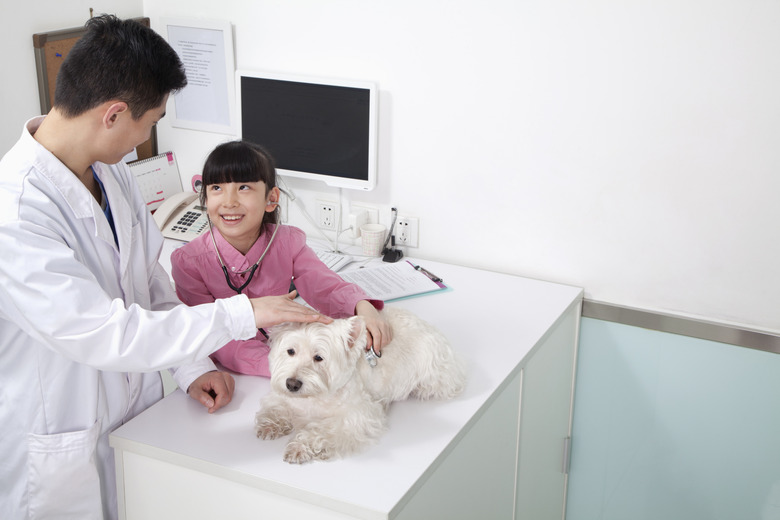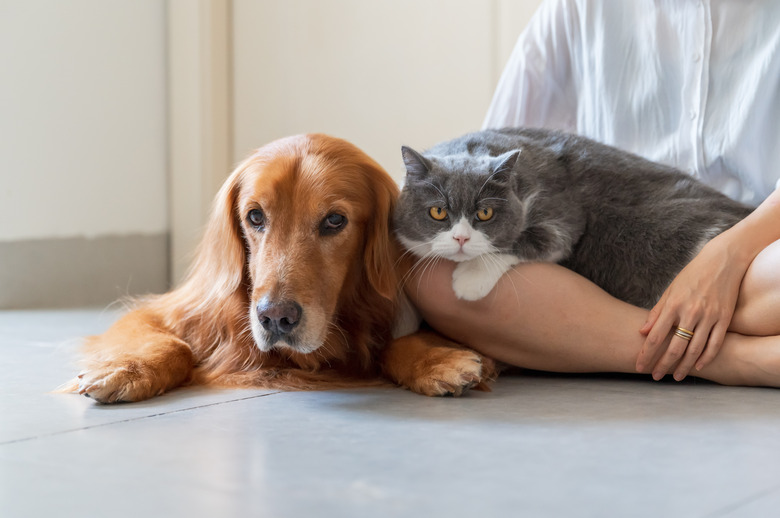Albendazole For Dogs: Uses, Side Effects & Alternatives
Albendazole is a drug that is part of the family benzimidazole, the type of medication most commonly used as an anti-parasitic in domestic animals. In dogs, this anthelmintic has also been used for certain types of infections.We spoke with Dr. Jordan Kautz, a veterinarian at Crestview Veterinary Clinic in Austin, Texas, to find out more, because there is some controversy about whether this kind of treatment is safe. Consult your veterinarian if you think your dog might have a parasitic infection.
Praziquantel vs. albendazole
Praziquantel vs. albendazole
The active ingredient in albendazole is albendazole. Its brand name is Albenza. There are a variety of similar drugs, like mebendazole, praziquantel, fenbendazole, and benzimidazole. Praziquantel is prescribed primarily to treat tapeworms. Albendazole can be used for a variety of worms. All these drugs are called anthelmintic drugs, meaning they work effectively on different types of roundworms, hookworms, and tapeworms.
Worm infections are caused by ingesting food or water contaminated with worm eggs or larvae. These drugs can't be given in a single dose. They must be taken for a few days. Dosage is based on the animal's body weight. In addition to dogs, albendazole can be used for cats and ruminants (sheep and cattle).
Nematodes and helminths are similar. Parasitic worms are called helminths. The helminths have a long, flat, or round body shape. Nematodes have a round body shape, like worms or thread, which is what their name means in Greek.
Albendazole reactions and side effects in dogs
Albendazole reactions and side effects in dogs
In dogs, the side effects of albendazole can include toxicity to bone marrow and intestinal epithelium. Albendazole is a powerful drug, but it should be used cautiously and not in high doses or for long periods. The most serious potential side effect of this treatment is bone marrow toxicosis and pancytopenia. Pancytopenia is a deficiency in red cells, white cells, and platelets.
Albendazole uses for dogs
Albendazole uses for dogs
A veterinarian may use albendazole for dogs to treat a very specific type of parasitic infection due to the location of it in the dog's body. Since there is concern that albendazole side effects include bone marrow toxicosis, many veterinarians are cautious about prescribing it. Due to such concerns, veterinarians will often instead prescribe fenbendazole, brand names Panacur and Safe-Guard.
"Fenbendazole, which we call Panacur, is what veterinarians prescribe more often," says Dr. Kautz. "This medication is very inexpensive and easily tolerated by most pets of all ages. However, a veterinarian might choose albendazole to treat a very specific type of a parasitic infection due to its location in the body."
Lung flukes are parasitic organisms called trematodes. There is one lung fluke that is fairly common in dogs in North America that is called Paragonimus kellicotti. Albendazole can be used for treatment of this infection as well.
Alternatives to albendazole for dogs
Alternatives to albendazole for dogs
Fenbendazole can be used to treat many common parasites in dogs, such as giardia, lungworm, roundworms, hookworms, whipworm, and some tapeworms. To be effective, your dog must finish the treatment and take the dewormer for the entire duration it is prescribed.
Another option is pyrantel pamoate, which is a dewormer and anthelmintic. The brand name for pyrantel pamoate is Nemex and Nemex 2. It is very effective for treating hookworm, roundworm, and stomach worm parasites in dogs as well as other pets. The side effects are minimal.
Signs and symptoms of parasitic infections in dogs
Signs and symptoms of parasitic infections in dogs
There are many types of parasitic infections dogs can have, and the symptoms can vary. Giardia infections cause vomiting, chronic intermittent diarrhea, fatty stool, and weight loss. With giardiasis, feces often have a greenish color and may include blood and mucus.
Signs of hookworms include intestinal distress and bloody diarrhea. Hookworms can also lead to anemia. Signs of anemia include pale gums, weakness, dry and dull hair, and coughing.
Tapeworms may cause weight loss, and your dog may scoot their bottom across the ground as a sign of anus irritation. Tapeworms are often seen as proglottid segments crawling near your dog's anus, or dried segments may be seen on their fur if there is an infestation. While this may sound disgusting, it can make detection simple.
Symptoms of roundworms include vomiting and diarrhea and possibly seeing worms in their vomit or feces. It can also cause a potbellied appearance, malnutrition, and coughing. It is especially common in puppies.
Lungworm can be symptomless or may have nonspecific symptoms. Common symptoms include coughing, sneezing, wheezing, respiratory distress, increased breathing rate, and exercise intolerance.
Whipworm symptoms include bloody and runny diarrhea and weight loss. They can also cause anemia and widespread debilitation. Bring your dog to the veterinarian if they exhibit signs and symptoms of a parasitic infection to treat it as quickly as possible.
The bottom line
The bottom line
A veterinarian may prescribe albendazole for a parasitic infection in dogs. But there is potential for serious side effects with the use of albendazole so many veterinarians are cautious about prescribing it. A veterinarian will likely try something else first instead, such as fenbendazole. If you are prescribed albendazole to treat a canine parasite, do follow your veterinarian's instructions and consult with them until treatment is completed.


